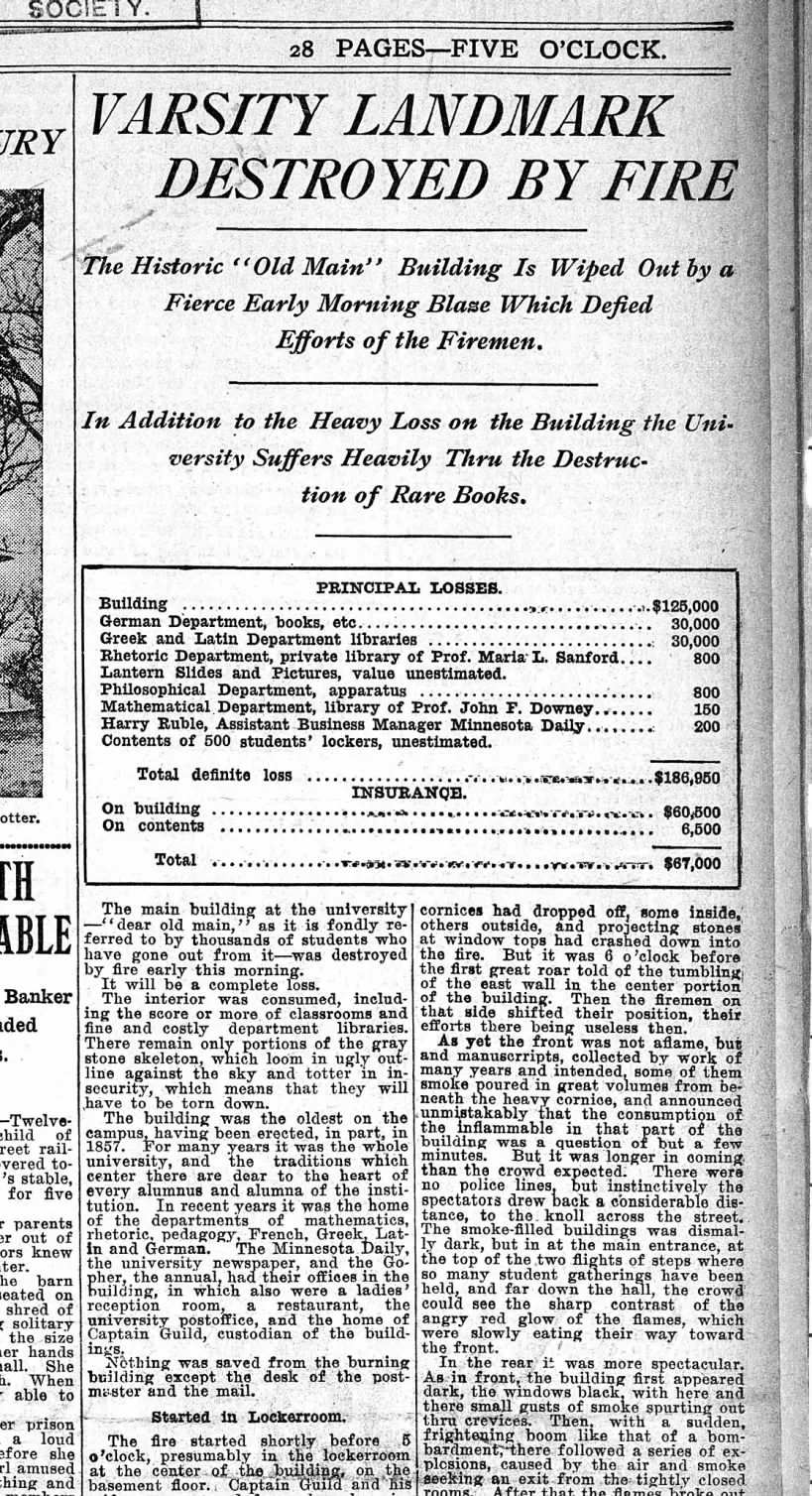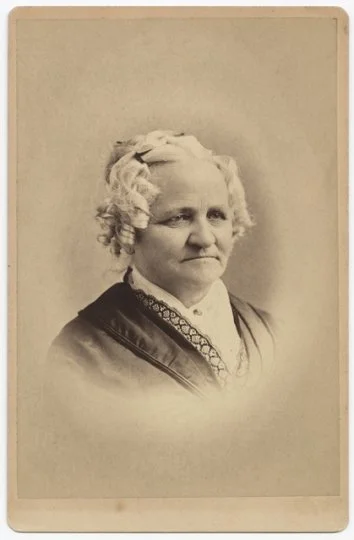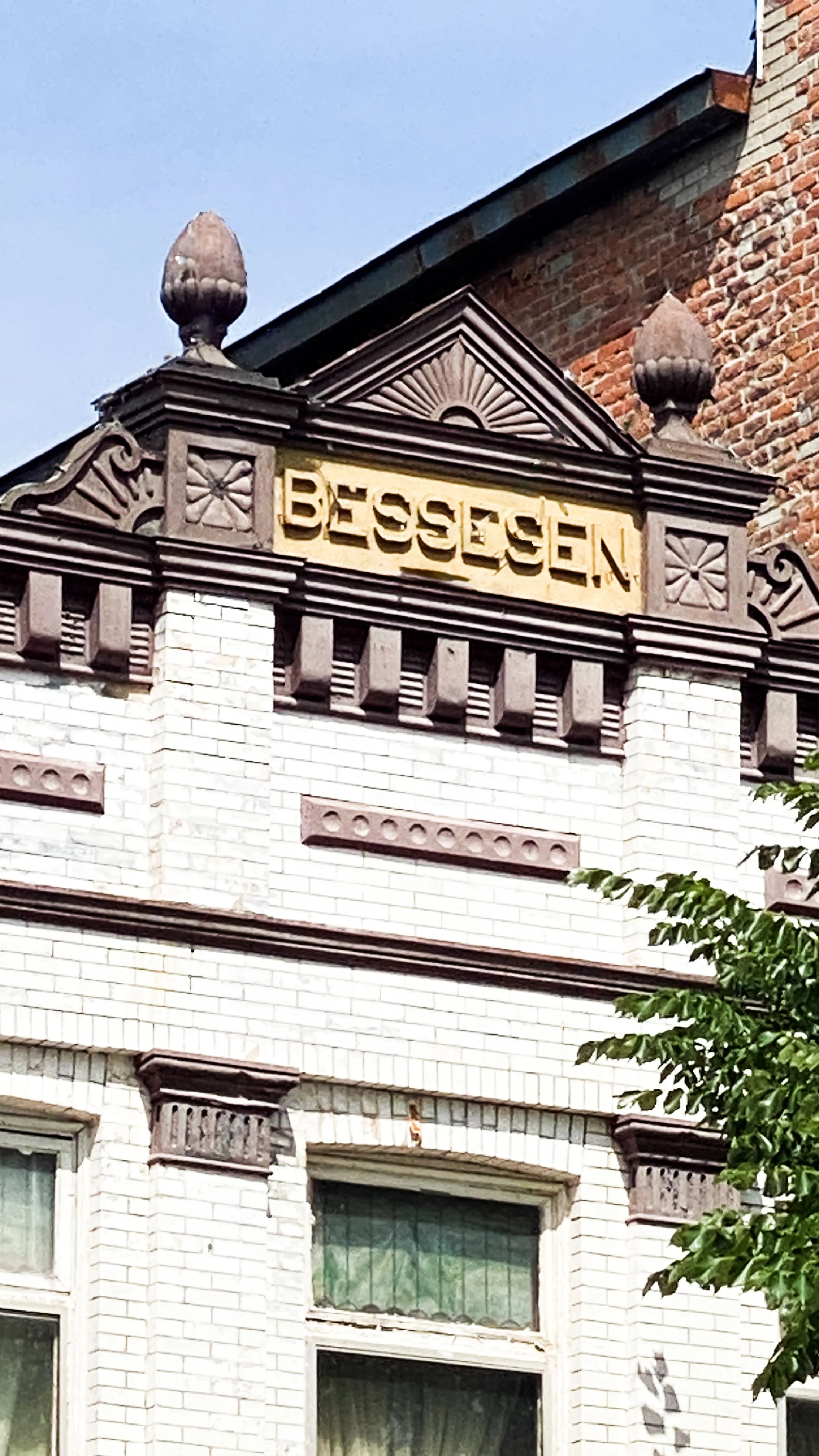The most recent appraisal of the U of M’s endowment is $2.5 billion. Which leaves a lot of people wondering if it was less of a land grant and more of a land grab.
When the University of Minnesota Crashed and Burned
The University of Minnesota prides itself on being “established in 1851” - before Minnesota was even a state. But the school didn’t graduate a college class until 1873. Why?
Who was Dan Patch?
I always get turned around at the Minnesota State Fair. I try to use the street signs to find my way and one of the main roads is called Dan Patch Avenue. Who was Dan Patch? Financial tycoon? Early leader of Minnesota? A professional athlete? Well, sort of. He was a race horse.
Minnesota Fraternities at War
Fraternities and Sororities are stereotypically known for their raging parties, but sometimes real life in the Greek houses at the University of Minnesota was a lot more serious.
Charlotte Van Cleve
Charlotte Ouisconsin Clark Van Cleve was the first white child born in the Wisconsin Territory. This was just one of the many firsts she witnessed in her remarkable life as one of Minnesota's earliest settlers.
The Seppman Mill
When Louis Seppman started building his wind-powered grist mill near Mankato in 1862, he didn’t really know what he was doing. He must have done something right, because the Sepmann Mill still stands as part of Minneopa State Park.
Marcy-Holmes: Minneapolis' Oldest Neighborhood
In 2022, a petition was started to remove Marcy’s name from Marcy park in the Marcy-Holmes neighborhood. If it is removed from the park, it is likely that the neighborhood will be renamed. Who were Marcy and Holmes anyway?
Old Bets
Betsey St. Clair, or Azayamankawin, became a famous figure in Saint Paul, known as “Old Bets”. As early as 1848 she was being mentioned in the newspapers. She also became one of the most photographed Native Americans in the United States.
The Opera Singer of Albert Lea
If you only stick to Interstate 35, you would be under the impression that the town of Albert Lea is just a couple of truck stops, but venture into town and Albert Lea is full of wonderful surprises. Not least of which is that it was once home to one of the world’s premier opera singers.
Marine on St. Croix
After almost 100 years, the village and ruins of Marine Mills were named a National Historic Landmark District. Today, as part of Marine on St. Croix, the General Store, Town Hall, fire station and dozens of historic houses provide a throwback to the first commercial sawmill in the Minnesota Territory.
The Minnesota State Flower
When the group of female artists and embroiderers set about creating the first Minnesota state flag in 1893, they made the decision to add the pink and white Showy Ladyslipper as a border around the state seal. This addition, by default, created a state flower. You would think that the selection of a state flower would be a simple and sedate affair, but alas, nothing involving gathering a group consensus is ever easy.
The Chute's Tunnel Hoax
Why do we have such a fascination with caves and tunnels? Just like our love of scary stories, we seem to love the idea of what might have lived - or might still be lurking - in the dark caverns beneath our feet. One particular cave in Minneapolis captured the imagination of the nation.
The Party Place of Early Minneapolis
When we learn about the history of Saint Anthony Falls, we learn about the lumber and flour mills, the tunnels and tailraces, the waterpower and the growth of the city. But do you know what we don’t often learn about? Where did people go to have fun?
Say Goodbye to Sears
It has been unclear what would happen to the Sears building in Saint Paul after it closed in 2019 - but it was recently announced that a local media group has bought the 17-acre lot. Now left with only 18 stores, Sears & Roebuck once operated over 5600 stores worldwide - and it all started in Redwood Falls, Minnesota.
The Longfellow Effect
No single book has influenced the geography of south Minneapolis more than “Song of Hiawatha” by Henry Wadsworth Longfellow - hundreds of streets, schools, lakes, waterfalls, neighborhoods, and more have been named after its characters. And he never even set foot in the state.
The Saint Anthony Falls Have Moved
Saint Anthony Falls, or Owamni, is the core of downtown Minneapolis and was the number one reason for the development of the city. But did you know that when Louis Hennepin famously first saw the falls in 1680, they were in a different place?
The Most Hidden Waterfall in Minnesota
I can’t blame you if you’ve never been to, or even heard mention of, Hidden Falls. It is aptly named. The lack of signage makes it seem like the park service is determined to keep it that way. The creek that feeds the waterfall has been buried for years underneath the Ford automotive plant, but now that it has closed and the land redeveloped it is getting a new life. A huge makeover has brought the water and its historical significance back to the surface.
Before Fort Snelling?
Fort Snelling is the center of Minnesota history education. Hundreds of stories are told about the people who lived there and the events that conspired to create the state of Minnesota. We can visit and explore the quarters where the soldiers through the eras called home and imagine their daily lives. But do you know what you almost never hear anyone talk about? Where did the soldiers live while Fort Snelling was being built?
A Second Secret Walker Art Gallery?
The Walker Art Center, easily recognizable on the landscape and on the lists of best galleries in America, was the work of Thomas Barlow Walker. This multimillionaire lumber and railroad icon was a true rags to riches story - and he never forgot it. His work with the city to create a free public library was soon followed by his desire for a free public art gallery. Today, the Walker Art Center charges admission - but there is still a second, secret (and FREE!) Walker Art Gallery. Do you know where it is?
Who is Harriet Island Named After?
There’s an island just across the Mississippi river from downtown Saint Paul called Harriet Island. Well, at least it used to be an island, but its back channel was filled in years ago. Minnesotans don’t talk much about the island’s namesake, Harriet Bishop, very often and that’s probably because she was a bit of an uptight %$#@*. She was an east coast snob, a school marm, a tee-totaler, a bible beating baptist and a racist. So how on earth did she get an island named after her?




















